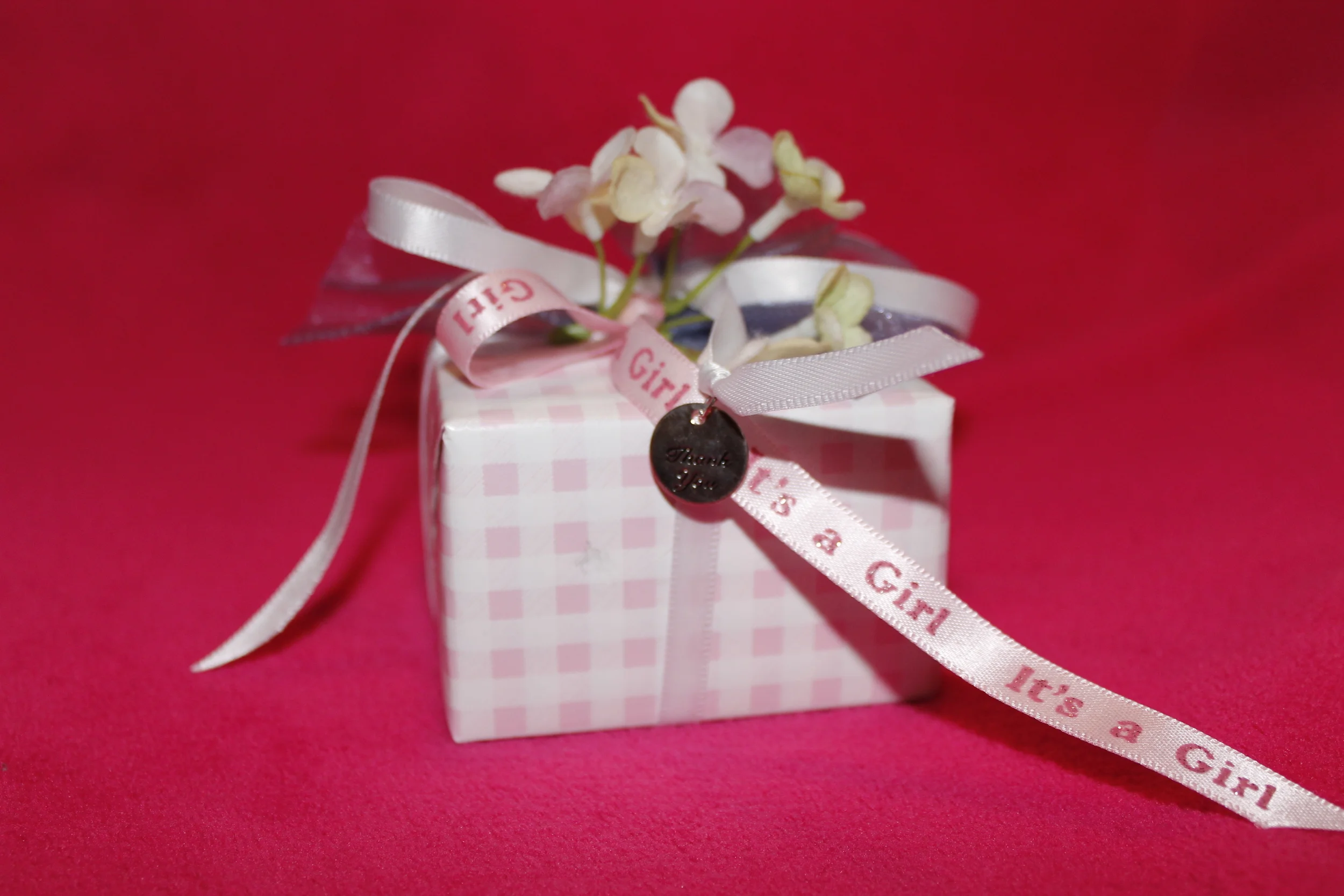Design elements are also found in children’s picture books. Like my mother-in-law’s gifts, picture books are works of art. They are objects of beauty, they entertain, and they contain several elements of design. In this series, I will share some ways to enjoy book design with children. Today’s topic is about: ENDPAPERS.
When you open a picture book, the first thing you’ll see are the endpapers. This is your invitation into the book. “Come on in,” they say. Just like the wrapping paper on a present, the motif tells a story. For example, we select specific wrapping paper for the occasion - like the birth of a baby girl in the picture above.
Endpapers serve a function by supporting the spine of a book. The design of endpapers can be functional and aesthetic. Interesting images, color, and/or patterns can help tell the story contained inside. Here are six books with interesting endpapers:
“Stellaluna” has a variety of bat sketches. We see a bat: flying solo and with other bats, hanging on a tree branch upside down with other bats, looking in the hollow of a downed tree, flying into a cave, sleeping upside down, playing hide-and-seek with another critter in reeds, caring for a baby bat, fishing in water while hanging onto reeds, fighting an adversary. Hanging fruit with bites taken are also tidbits that support the storyline.
“The Day the Crayons Quit” has colorful crayons sprinkled on the front and back endpapers.
“Olivia Forms a Band” has a white background with big red polka dots.
“Oh, the Places You’ll Go” has a person entering a maze. The path is yellow and lined with green grass. There are some mountains on the horizon in this Dr. Seuss classic (and perennial favorite for graduation gift giving).
“How to Babysit a Grandpa” has 8 drawings by the grandchild that are affixed to a green background by tape and pushpins. Here are the grandchild’s drawings: Grandpa skipping along a path toward a house, Mom & Dad waving near a car with a cat in the foreground, Grandpa and grandchild jumping, Grandpa and grandchild playing a game, Grandpa and grandchild eating ice cream and cookies, Grandchild doing acrobats while grandpa claps, Grandpa and grandchild at the seashore, Grandchild stands in the doorway as Grandpa walks away from the house, down a path, and waving good bye. The parents are waving too from the window.
“How to Babysit a Grandma” has 7 snapshots/photographs in the front endpapers: Grandma and granddaughter are surrounded by shoes with a camera in the left corner of the foreground playing shoe shop, Granddaughter playing shadow puppets, dog licking Granddaughter, Grandma running after the dog, dog wearing bows, Granddaughter and Grandma hugging, and dog with slippers. There are 8 snapshots/photographs in the back endpapers: Grandma and granddaughter are playing a game with their hands, Granddaughter is wearing a disguise, Grandma rolled up in a carpet with granddaughter and dog laughing, the two are dancing and doing karaoke, food on a plate in the shape of a smile, the two are going down a slide, Grandma is relaxing on a couch with granddaughter and dog in tow, and ducks.
Recognize design elements and have an intentional conversation about the endpapers the next time you sit down with a child to experience a picture book. Do the endpapers do more than simply support the architecture of the book? Are the endpapers part of the story? Is your book experience enhanced as a result of the endpapers? What do you like/dislike about the presentation? Enjoy the gift of design represented in the endpapers used in picture books.
Literature Cited
Cannon, J. (1993). Stellaluna. New York: Harcourt.
Daywalt, D. & Jeffers, O. (2013). The Day the Crayons Quit. New York: Philomel.
Falconer, I. (2006). Olivia Forms a Band. New York: Simon & Schuster.
Geisel, T. S. (1990). Oh, the Places You’ll Go! New York: Random House.
Reagan, J., & Wildish, L. (2012). How to Babysit a Grandpa. New York: Alfred A. Knopf.
Reagan, J., & Wildish, L. (2014). How to Babysit a Grandma. New York: Alfred A. Knopf.

























